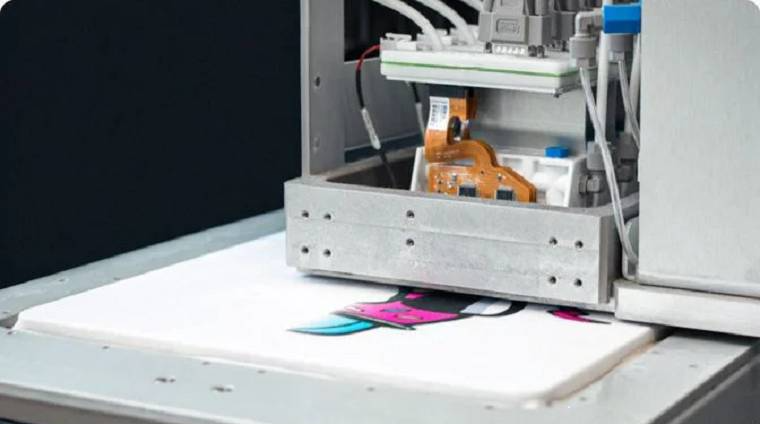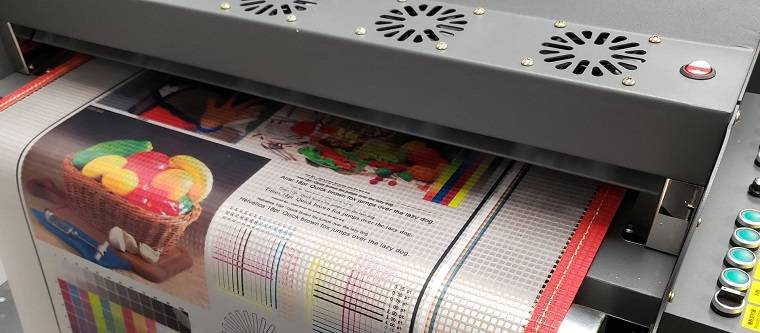How to Create Unique T-Shirts: 8 Types of Shirt Printing

Whether you're starting your clothing line, creating brand merchandise, or making one-of-a-kind gifts, knowing how to print high-quality t-shirts is crucial. The quality and durability of printed t-shirts depend heavily on the printing process used.
Each printing style has its strengths, ideal uses, costs, and creative possibilities. Some offer vibrant, full-color designs. Others prioritize texture, durability, or cost efficiency. Read to learn the 8 major types of shirt printing, and how to choose the best method for your project or business.

|
Find Better Supplier For Products DSers Supplier Optimizer - One click to filter out the most proper suppliers for your products |
8 Types of Shirt Printing
Let’s explore today's different methods, from classic screen printing to cutting-edge technologies like direct-to-film.
Screen Printing
Unlike digital printing, screen printing uses physical stencils to apply thick, durable ink layers, making it perfect for simple designs with limited colors that need to withstand repeated washing.
This screen, made of fine mesh, is carefully coated with a light-sensitive emulsion. Once your design is transferred onto the screen, it’s time for the magic to happen. Under controlled pressure, the ink penetrates the mesh openings, creating sharp-edged, color-saturated reproductions of your artwork on the garment.
This method is particularly well-suited for simple designs featuring one to four colors. Its efficiency shines in bulk orders, making it an ideal choice for businesses looking to produce larger quantities without sacrificing quality.
- Extremely durable prints
- Bright and vivid colors
- Cost-effective for large runs
- Expensive setup for small batches
- Not optimized for highly complex or full-color graphics
Direct-to-Garment
DTG printing is a contemporary, digital method that employs specialized inkjet printers to directly apply vibrant, high-quality ink onto fabric, allowing for intricate designs, detailed artwork, and extensive customization options for unique apparel.

The DTG process involves translating digital artwork into printer commands that activate inkjet arrays, spraying water-based pigments directly onto fabric. This allows for deep ink absorption and a natural-looking print. There’s no need for screens or plates—just load the design and print.
This method shines with full-color designs, making it perfect for small batches or one-off creations. It’s especially suited for photographic images or highly detailed graphics that require precision and vibrancy.
- No minimum order requirements
- Ability to print complex, colorful designs
- Softer feel on fabric compared to screen printing
- Slower for bulk production
- Works best on 100% cotton fabrics
Direct-to-Film
DTF is a cutting-edge technology that effectively combines the flexibility of digital printing with the versatility of transfer printing. This ensures stunning, high-definition prints on a broad selection of fabrics.

DTF printing starts with designs printed onto a special transfer film. A powder adhesive is applied and cured, ensuring durability. Once ready, heat application permanently adheres the film to the garment, locking in the design with sharp clarity.
This method is ideal for small to mid-size orders and excels with complex designs across various fabrics. It’s particularly effective for apparel that isn’t purely cotton, such as polyester blends, allowing for versatile applications.

|
Place Orders to AliExpress In Seconds DSers Bulk Order - Place 100s of orders to AliExpress in a few seconds with a just few clicks |
- Works on all types of fabrics
- Durable, vibrant prints
- Can produce and store transfers for later use
- Requires extra steps compared to DTG
- Some feel a slight texture compared to direct print
Dye Sublimation
Dye sublimation works by embedding dye directly into polyester fabrics under high heat, ensuring rich, photorealistic prints that won't crack or peel—perfect for high-end custom apparel and decor.
The process initiates with sublimation dyes printed onto specialized transfer paper. Under controlled heat and pressure, these dyes undergo phase transition from solid to gas, permanently diffusing into polyester polymer chains. This unique method ensures the design becomes an integral part of the fabric, rather than simply resting on top.
For vibrant, all-over prints that won’t crack or fade, sublimation is the gold standard for polyester apparel and performance fabrics. It’s especially suited for lightweight, breathable clothing, making it an excellent choice for athletic wear and stylish summer apparel.
- No cracking, peeling, or fading
- Breathable and soft prints
- Perfect for vibrant, all-over designs
- Only works on light-colored, synthetic fabrics
- Not suitable for cotton shirts
Plastisol Transfer
Plastisol transfers combine the traditional screen printing method with the flexibility of heat transfer, allowing for high-quality, detailed designs to be easily applied to various fabrics. Produces custom wearables with museum-quality color reproduction and industrial-grade durability.
Step one involves printing the image onto high-release sublimation paper using dye-based inks. Once the design is ready, it is heat-pressed onto the garment, ensuring a strong and vibrant transfer that captures every detail.
This method is ideal for designs that require fine details and is perfect for stockpiling designs for quick fulfillment. Additionally, it allows for flexible production schedules, making it a practical choice for businesses with varying demands.
- Offers a screen-printed feel and look
- Transfers can be stored and pressed later
- Good durability
- Requires a quality heat press
- Initial screen creation can be costly
Heat-Transfer Vinyl
HTV, or heat transfer vinyl, involves cutting intricate designs from colored vinyl sheets and then heat-pressing them onto garments. The process enables photorealistic color reproduction and complete design customization, particularly suited for on-demand textile manufacturing and fashion applications.
Firstly, the design is cut from vinyl using a precision cutter machine. After cutting, excess vinyl is carefully removed in a step known as "weeding." Finally, a heat press applies the vinyl to the garment, ensuring a strong bond and clean finish.
This method is best suited for simple logos, names, and graphics. It’s particularly popular for sports jerseys, where numbers and names are essential. Additionally, it works well for small runs or personalized items, allowing for customization with ease.
- Durable and vibrant designs
- Easy for personalization
- Relatively low start-up costs
- Limited to solid colors unless layered
- More labor-intensive for complex designs
Discharge
Discharge printing works by bleaching the fabric's original color and printing new colors in its place - all at the same time. This technique creates soft, breathable designs on garments, resulting in a vintage look and feel.
First of all, the process begins with printing water-based discharge ink directly onto dyed fabric. When heat is applied, it activates a discharge agent within the ink that removes the fabric’s original dye precisely where the design was printed.
This method is best suited for creating a soft, vintage, or worn-in look, especially on dark, 100% cotton shirts, where the results are most striking.
- Super-soft prints with no extra thickness
- Ideal for muted, retro-style designs
- Results vary based on the shirt dye
- Strong chemicals require careful handling
Airbrush
Airbrush printing is an artistic technique that involves hand-painting designs directly onto garments using specialized airbrush tools. This method allows for intricate details and smooth color gradients, resulting in unique, one-of-a-kind apparel that showcases creativity and craftsmanship.
The process involves spraying a fine mist of paint onto the shirt using an airbrush. Artists often work freehand, allowing for creativity and spontaneity, or they may use stencils for more structured designs. This technique brings a unique artistic flair to each piece.
Airbrushing is perfect for creating one-of-a-kind, custom designs that stand out. It’s especially ideal for personalized event shirts, such as those made at fairs or festivals, and makes for unique gifts that showcase individuality and creativity.
- Unlimited creativity
- No need for screens or printers
- Artistic, premium appeal
- Labor-intensive
- Not ideal for mass production
- Skill-dependent
How to Pick the Right Printing Technique for Your T-Shirts
Choosing the right printing method depends on your specific goals, your budget, and the customer experience you want to deliver. Use these guiding questions to make your decision.
What’s Your Quantity
For large orders of 100 or more shirts, screen printing or plastisol transfers are typically the most economical options, providing cost-effective solutions for bulk production.
For smaller batches or one-off designs, direct-to-garment (DTG) or direct-to-film (DTF) printing offers greater flexibility without the burden of high setup costs, making it ideal for customized apparel.
How Complex Is Your Design
For simple logos, heat transfer vinyl (HTV) or screen printing are excellent choices, providing clean and crisp designs.
When it comes to photographic images or full-color artwork, direct-to-garment (DTG), direct-to-film (DTF), or dye sublimation printing are the best methods, as they effectively handle complex graphics and vibrant colors.
What Fabric Are You Printing On
For 100% cotton fabrics, screen printing, direct-to-garment (DTG), and discharge printing are effective methods, ensuring vibrant and durable designs.
For polyester or blended fabrics, direct-to-film (DTF) printing and dye sublimation are better options, as they provide excellent adhesion and vibrant color reproduction on synthetic materials.
How Fast Do You Need It
For quick turnaround times, print-on-demand (POD) services utilizing direct-to-garment (DTG) or direct-to-film (DTF) printing offer rapid production and delivery, making them ideal for urgent needs.
For bulk orders that allow for planning, screen printing is the more cost-effective choice.
What’s the Desired Feel
For a soft, lightweight feel, discharge printing and sublimation techniques yield fabric-soft results that enhance comfort.
In contrast, heat transfer vinyl (HTV) and screen printing deliver bold, textured designs, providing a more tactile experience that stands out on garments.
Wrapping Up
Choosing the right t-shirt printing method is both an art and a science. By understanding the different types of shirt printing available, you’re equipped to make smarter decisions based on your business model, design style, and customer expectations.
Ready to bring your t-shirt designs to life? Start by picking the printing method that aligns with your vision, and create shirts that people will love to wear again and again.









 Company
Company
 Why Choose DSers
Why Choose DSers
 Blog
Blog
 Help Center
Help Center




 Live Chat
Live Chat